Animals Of The Kalahari Desert
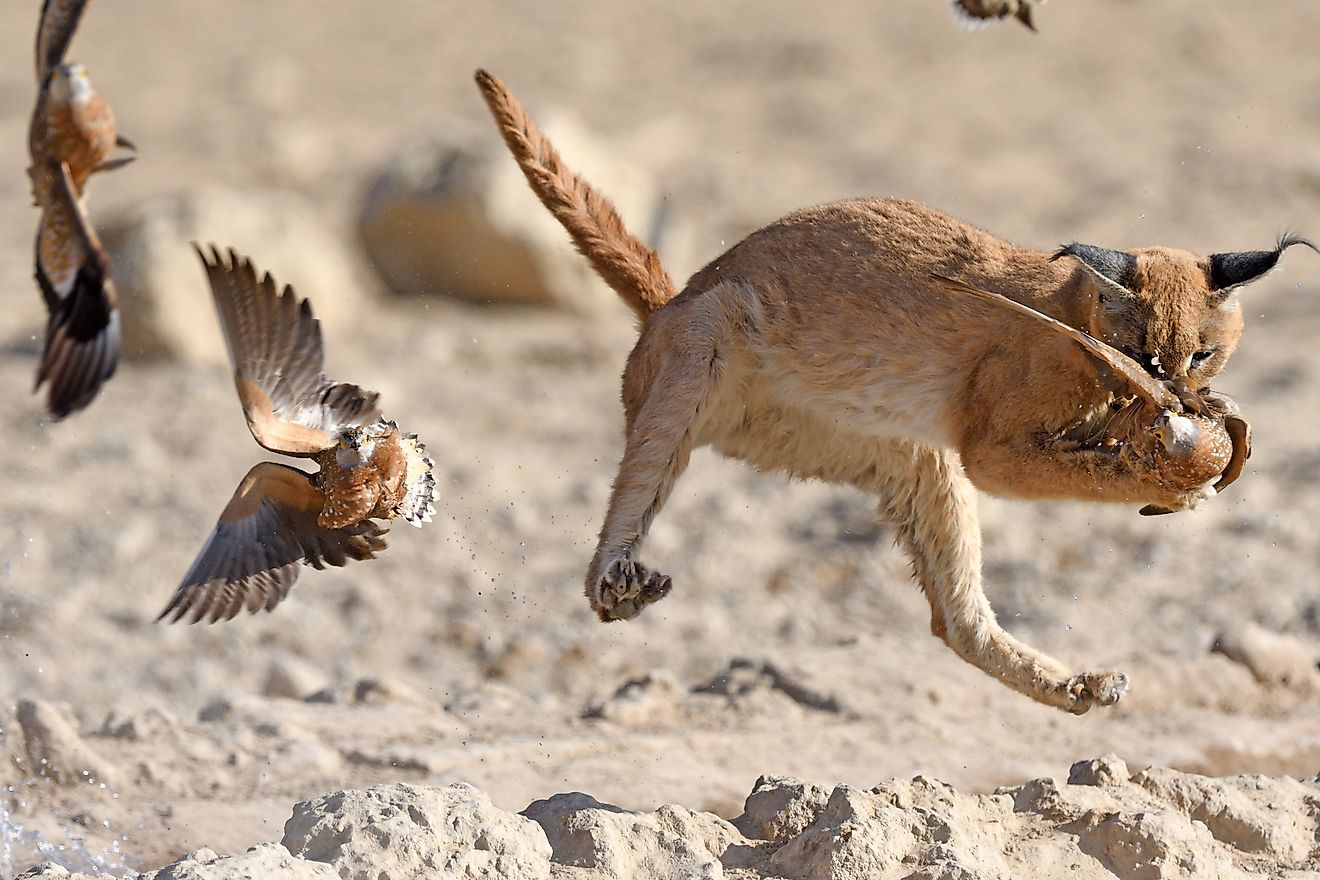
- Some of the iconic carnivores of the Kalahari include the Kalahari lions, cheetahs, leopards, and wild dogs.
- Notable herbivores include elephants, black rhinos, larger herds of gemsbok, hartebeest, springbok, wildebeest, and impalas.
- Many species of venomous snakes like the puff adder, a viper responsible for most snakebite fatalities in Africa, is found in the Kalahari Desert.
- The Kalahari Desert also has a rich birdlife including many birds of prey, flamingos, social weavers, vultures, and more.
The Kalahari Desert, a vast expanse of arid grassland, occupies parts of South Africa, Namibia, and Botswana in Southern Africa. The desert has an area of around 360,000 square miles. Despite the arid environment, the desert exhibits a great range of geographic and seasonal variations across its vast area. As such, it supports rich biodiversity including 320 species of mammals and birds.
Some of the iconic carnivores of the Kalahari include the Kalahari lions, cheetahs, leopards, and wild dogs. Notable herbivores include elephants, black rhinos, larger herds of gemsbok, hartebeest, springbok, wildebeest, and impalas. Among the small mammals, the Kalahari is known for its large colonies of meerkats as well as honey badgers, anteaters, aardvarks, porcupines, etc. Many species of venomous snakes like the puff adder, several species of lizards, and amphibians like the African bullfrog, also call the desert their home. The Kalahari Desert also has a rich birdlife including many birds of prey, flamingos, social weavers, vultures, and more
15. Meerkat
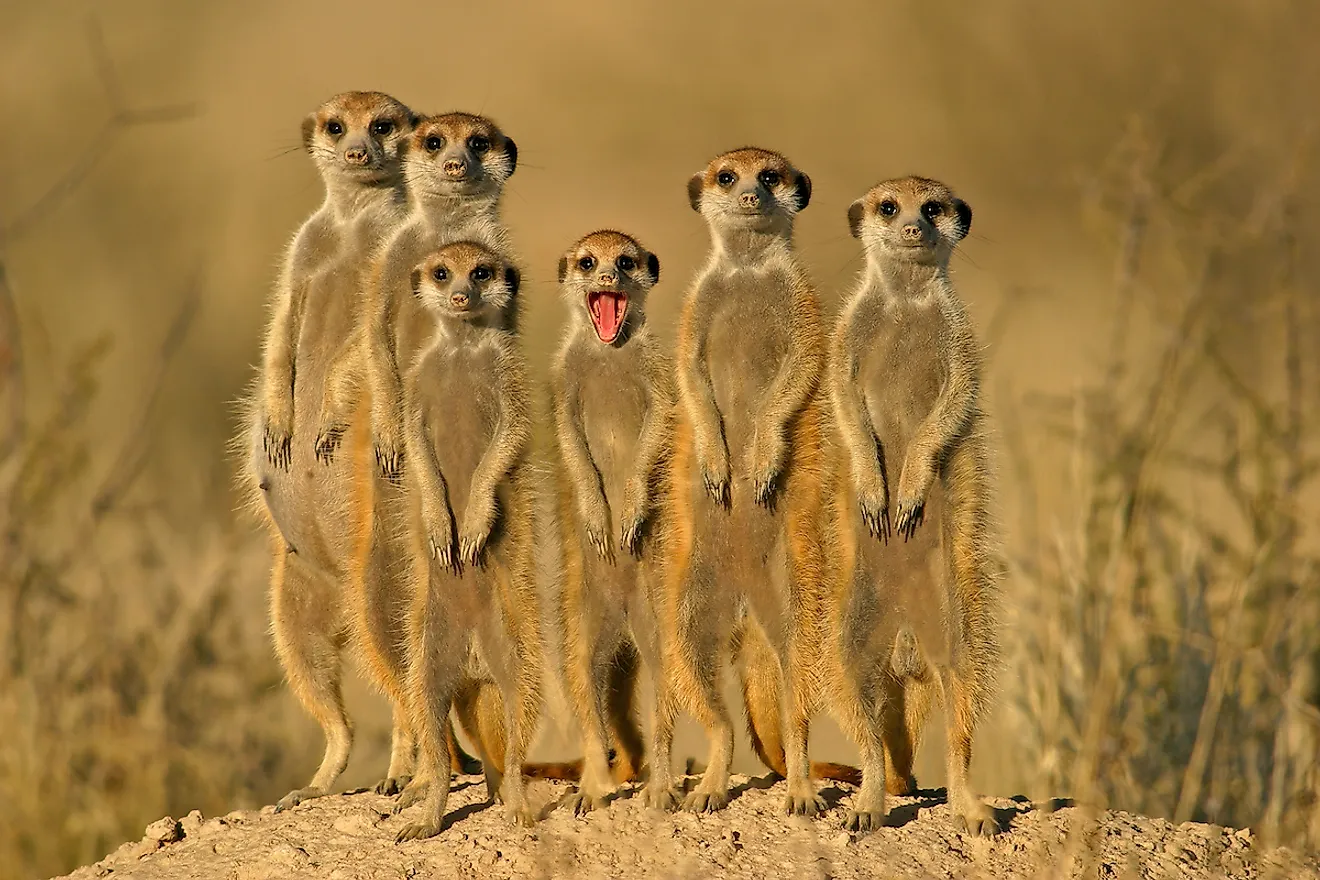
The meerkat (Suricata suricatta) is a mongoose living in Kalahari. These animals are highly social living in packs of 2 to 30 individuals with a social hierarchy in each pack. They live in burrows or rocky crevices in stony parts of the desert. They are active during the day and always stay on high alert communicating with each other to signal presence of predators or other dangers. Primarily, they are insectivorous animals although they also eat small animals such as snakes and lizards. In some rare cases, they will also feed on fungi and plants.
14. Puff Adder
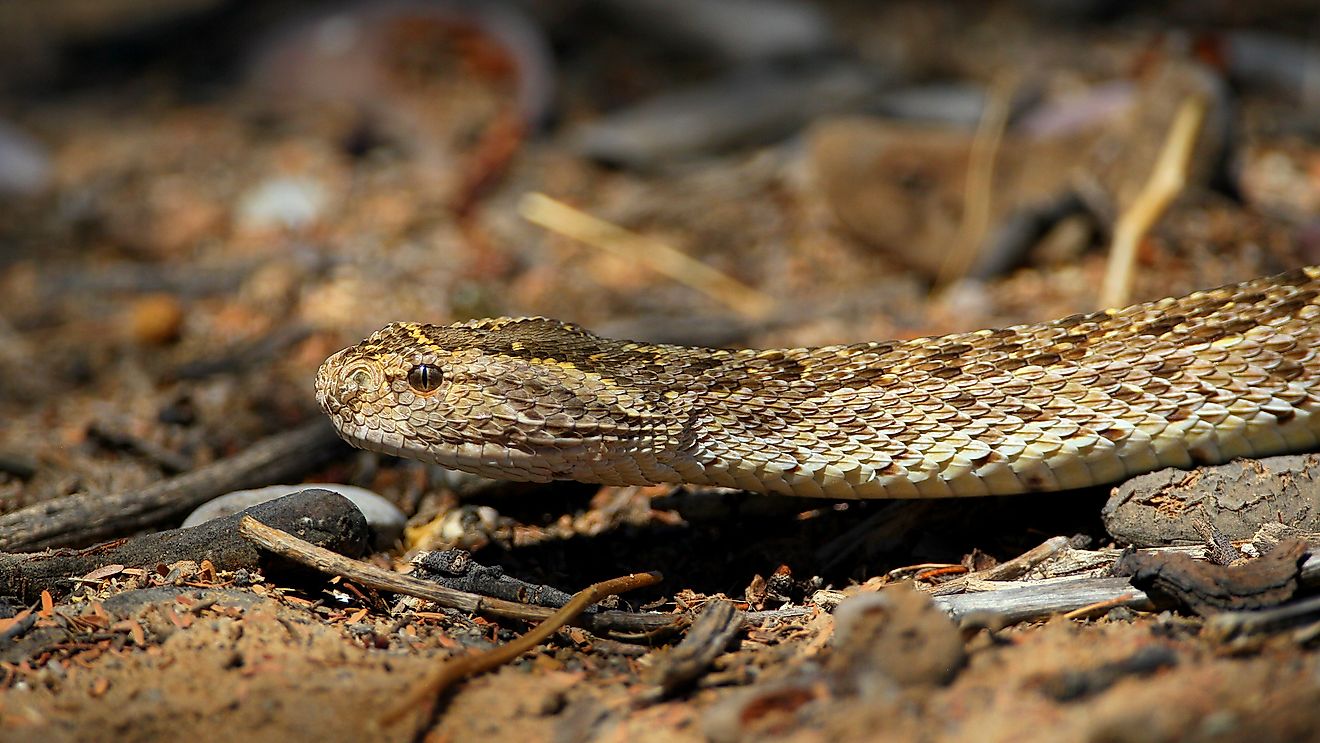
The puff adder (Bitis arietans) is a venomous viper found in the Kalahari. It is one of the deadliest snakes in Africa that is responsible for a high number of snakebite fatalities in the continent. It produces a highly potent venom with extreme cytotoxic effects.
13. Springbok
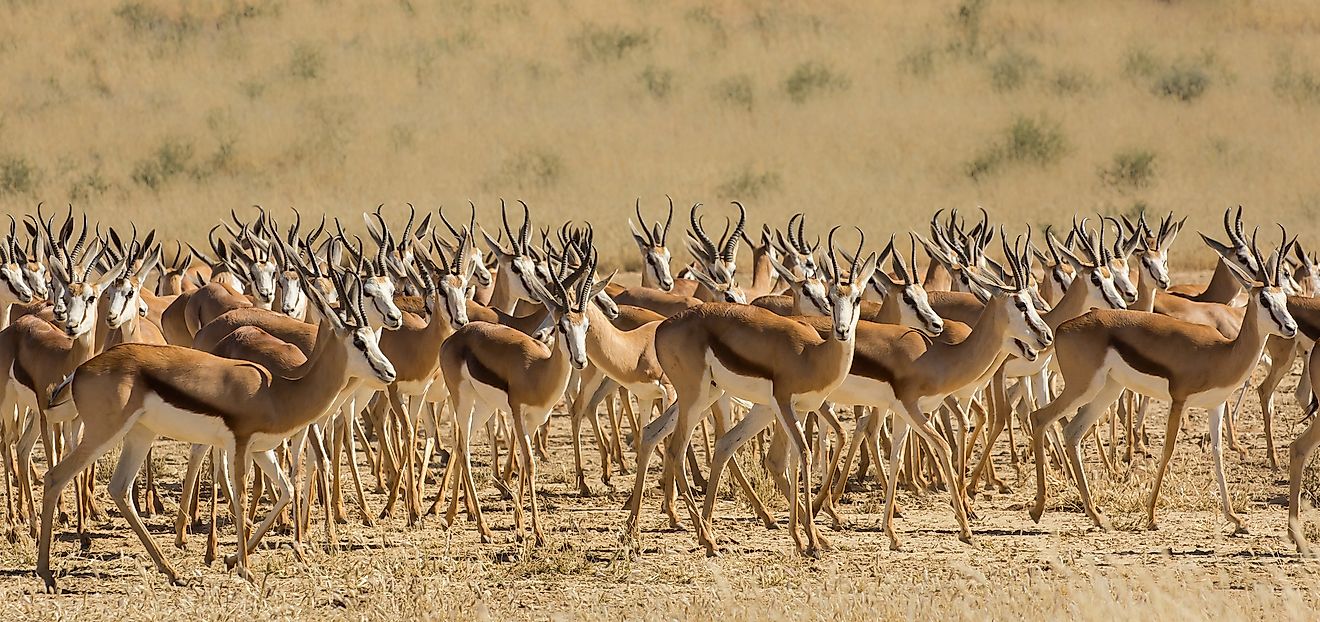
Large herds of Springbok, (Antidorcas marsupialis) can be spotted in the Kalahari Desert. These animals are antelopes of the gazelle tribed that are noted for their grace and strikingly marked coats. The springbok is the nickname and symbol of South Africa's national rugby team.
12. Blue-headed Agama Lizard
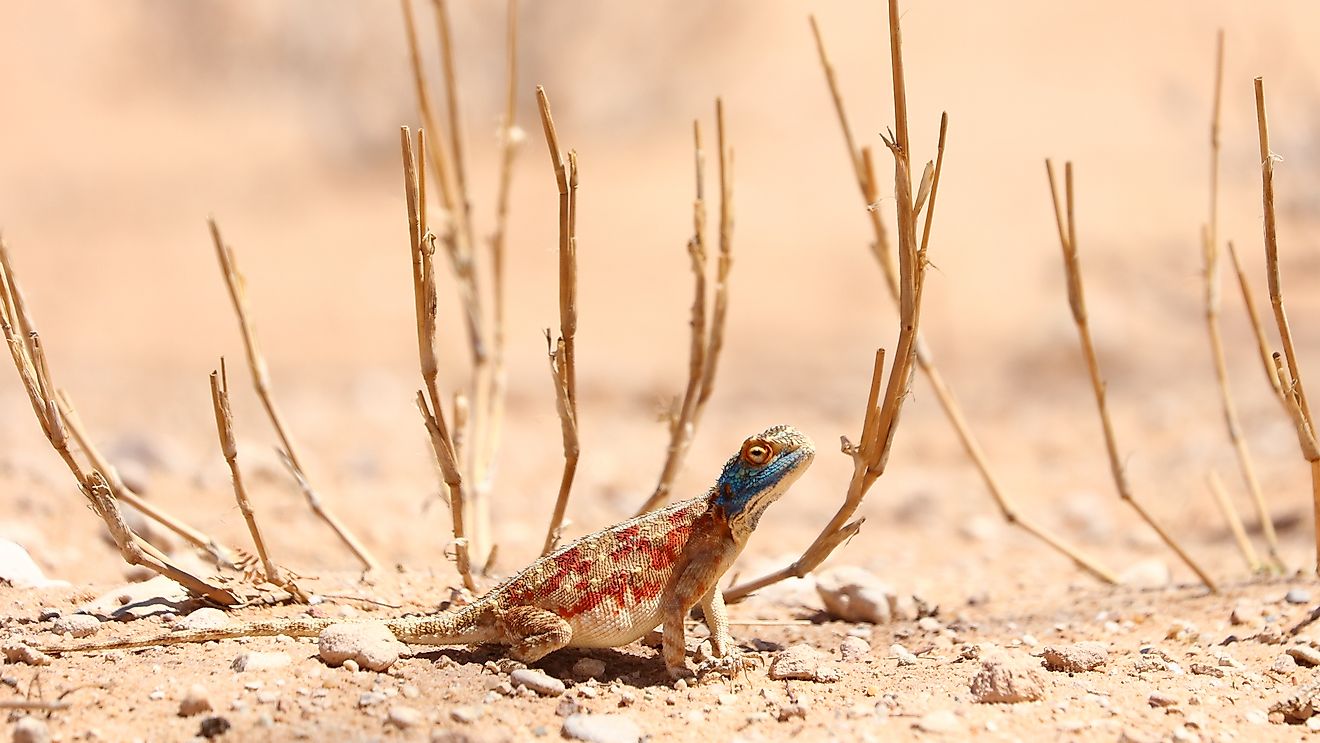
The southern rock agama (Agama atra) is a lizard species found in the Kalahari Desert where it lives in small colonies in rocky outcrops. Males of this species are famous for their bright blue heads. While males of this species like to sit atop rocks, females are more shy and tend to remain hidden. Females are more uniform greyish-brown in color. These lizards are diurnal and feed primarily on insects like termites and ants.
11. Elephant
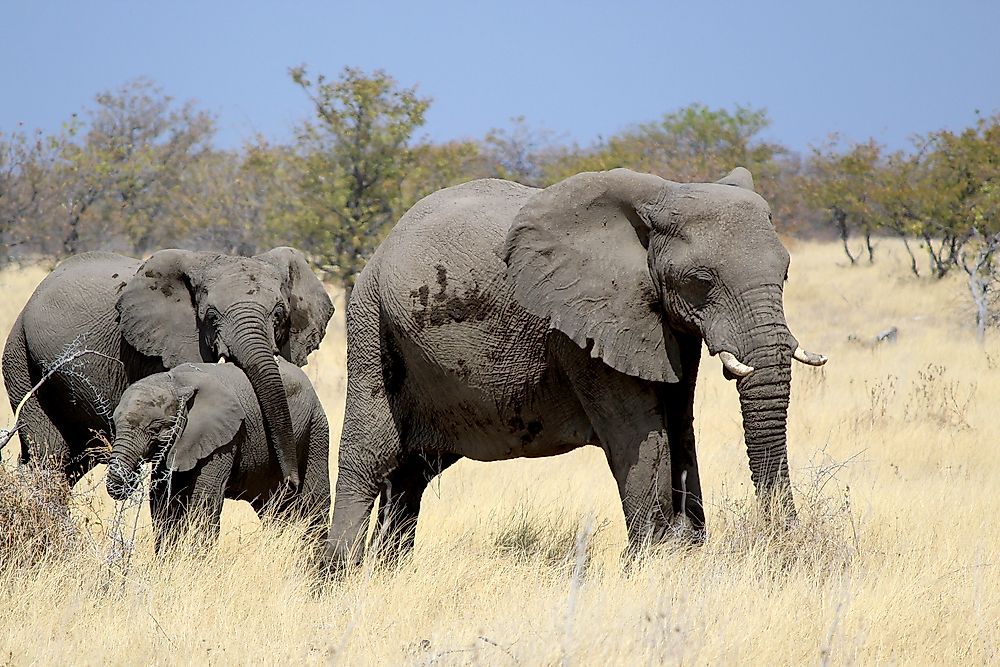
There are three species of elephant in existence today: the African bush elephant, the Asian elephant, and the African forest elephant. The African variations can weigh anywhere between 2.7 and 11.5 tons with the bush elephant being bigger. The diet is primarily vegetation although it does not provide as much energy as other forms of food. Consequently, the animal has to spend around 18 hours a day feeding on around 600 pounds of vegetation daily in order to sustain its substantial size. In addition, the animal rarely sleeps since it has to feed constantly.
10. Flamingos
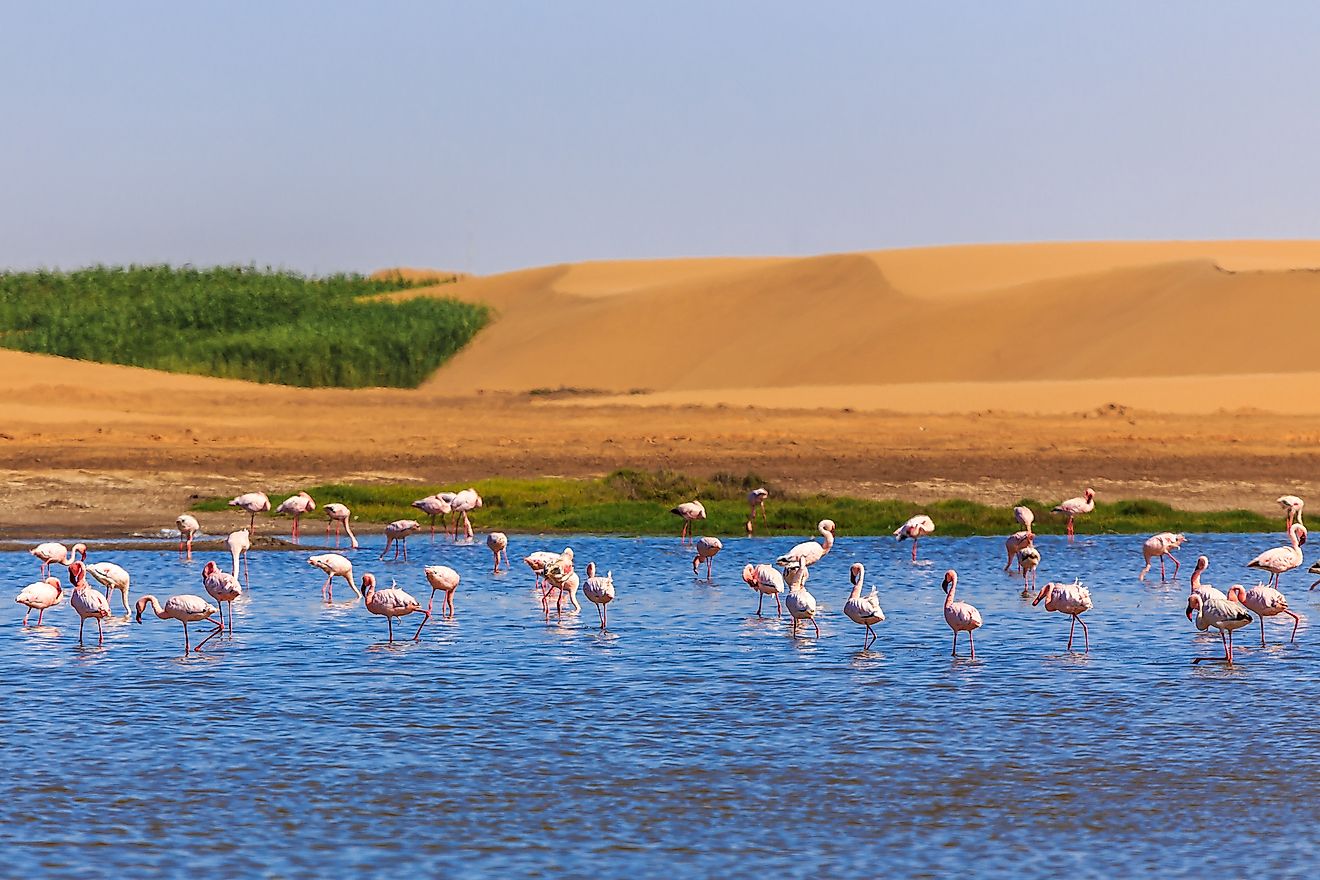
The Makgadikgadi Pans in the Kalahari are famous for their birdlife. In years when there is adequate rainfall, many birds gather in the region including tens of thousands of both lesser and greater flamingos. The birds feed on the brine shrimps and algae found in the shallow lake waters.
9. Giraffe
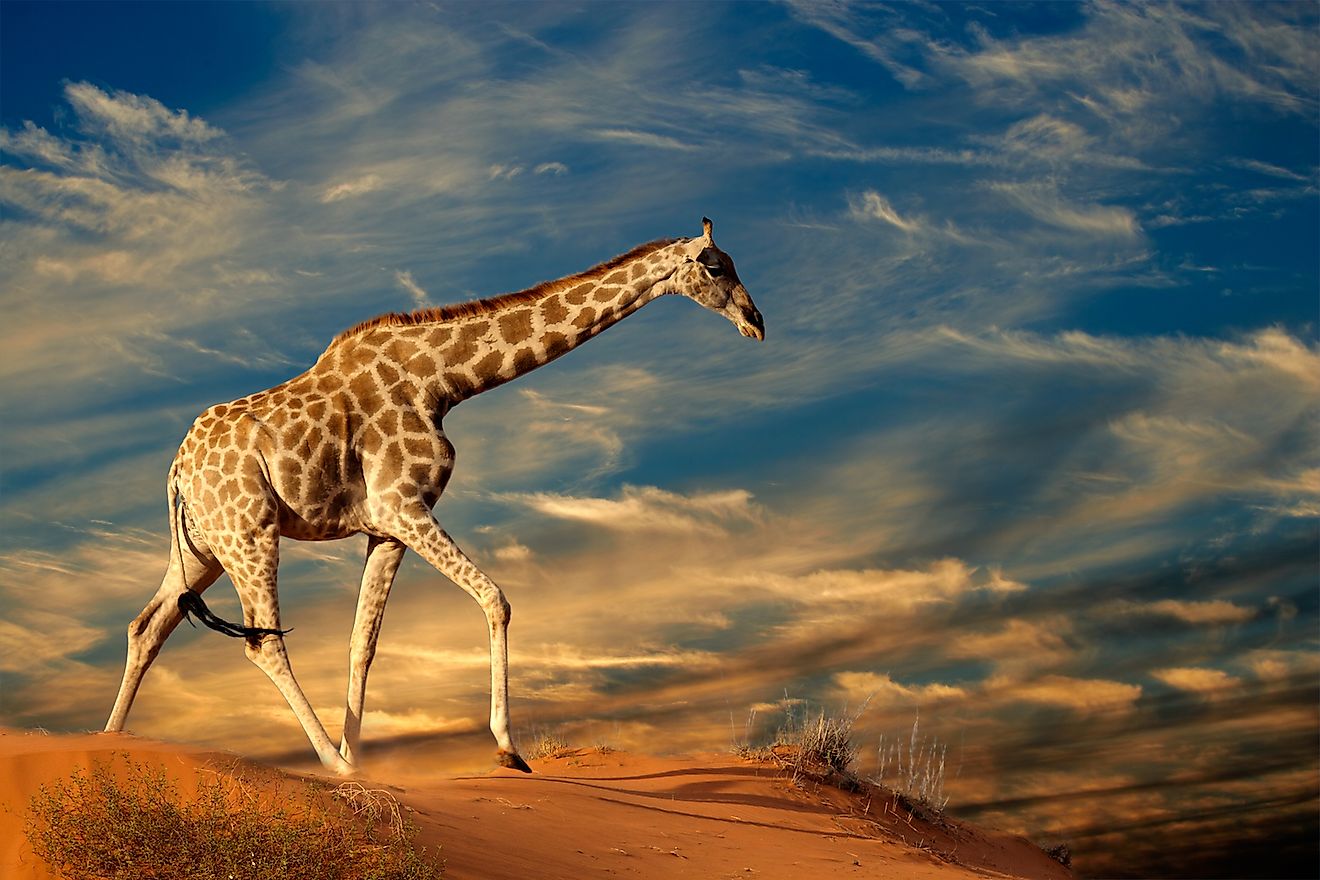
The giraffe is the tallest living animal in the world with an average height of anywhere between 14.1 and 18.7 feet with the males being taller. The average weight of an adult male is 2,628 pounds and 1,825 pounds for females. The animal prefers to live in open woodlands and savannahs. The diet of the giraffe is herbivorous mainly involving vegetation from the subfamily of Acacieae as well as shrubs, fruits, and grass. The giraffe may also start chewing on the bark of a plant, especially during periods of stress.
8. Rhino
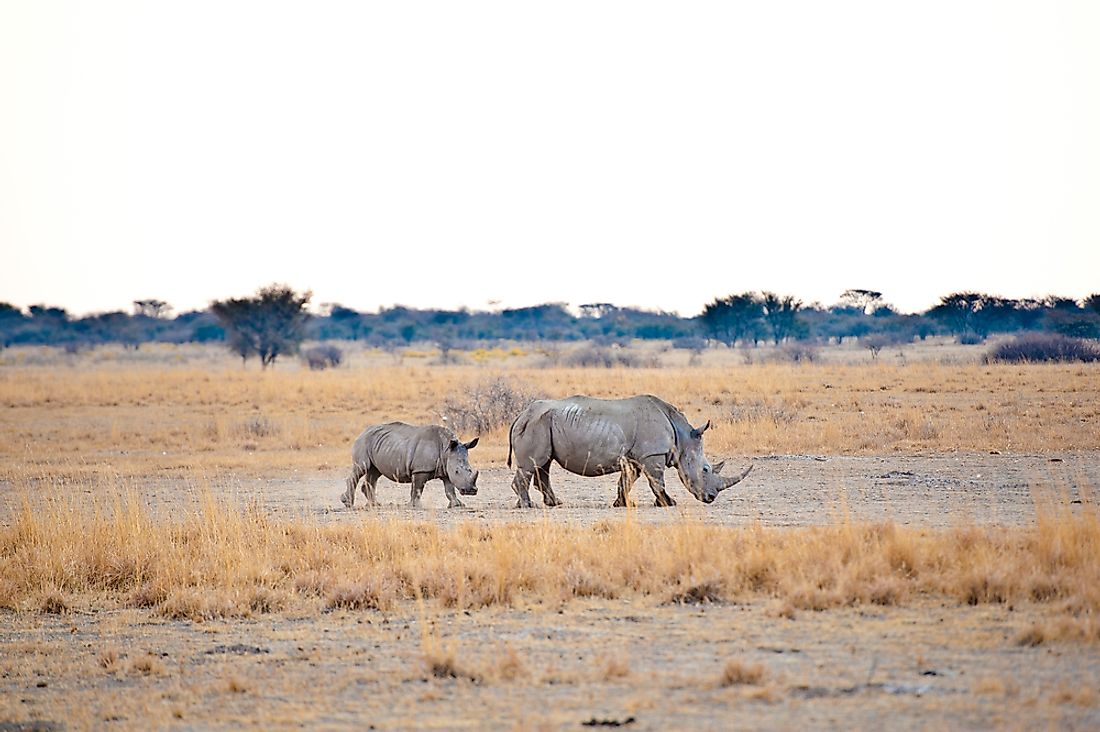
Currently, there are only five remaining species of the rhino with two of them being native to Africa. The herbivorous animals have huge physical sizes as well as a small brain that weighs between 14 and 21 ounces. The two species native to Africa are the white rhinoceros and the black rhinoceros. The former has an average weight of 4,000 pounds for females while the males have an average weight of 5,000 pounds. The latter species is smaller with an average weight of between 1,870 and 3,530 pounds.
7. Sociable Weavers
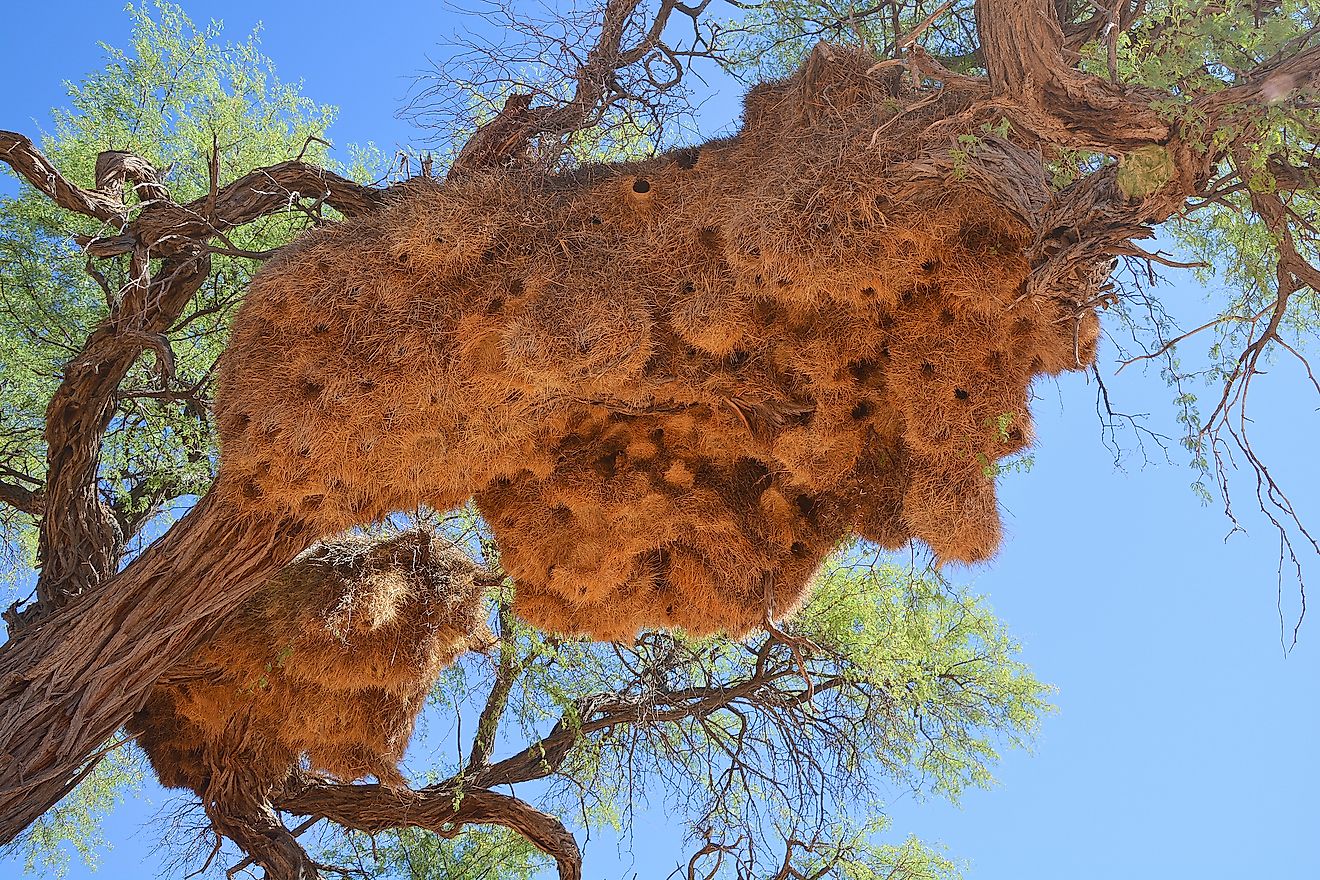
The sociable weaver (Philetairus socius) is a notable bird of the Kalahari Desert. A member of the weaver family, these birds are known for their ability to build massive community nests, one of the most spectacular structures of nature. These nests are the largest of any bird and can house more than 100 pairs of birds. The nests are build in a manner to maintain optimum temperatures for the birds, their eggs, and hatchlings.
6. Cheetah
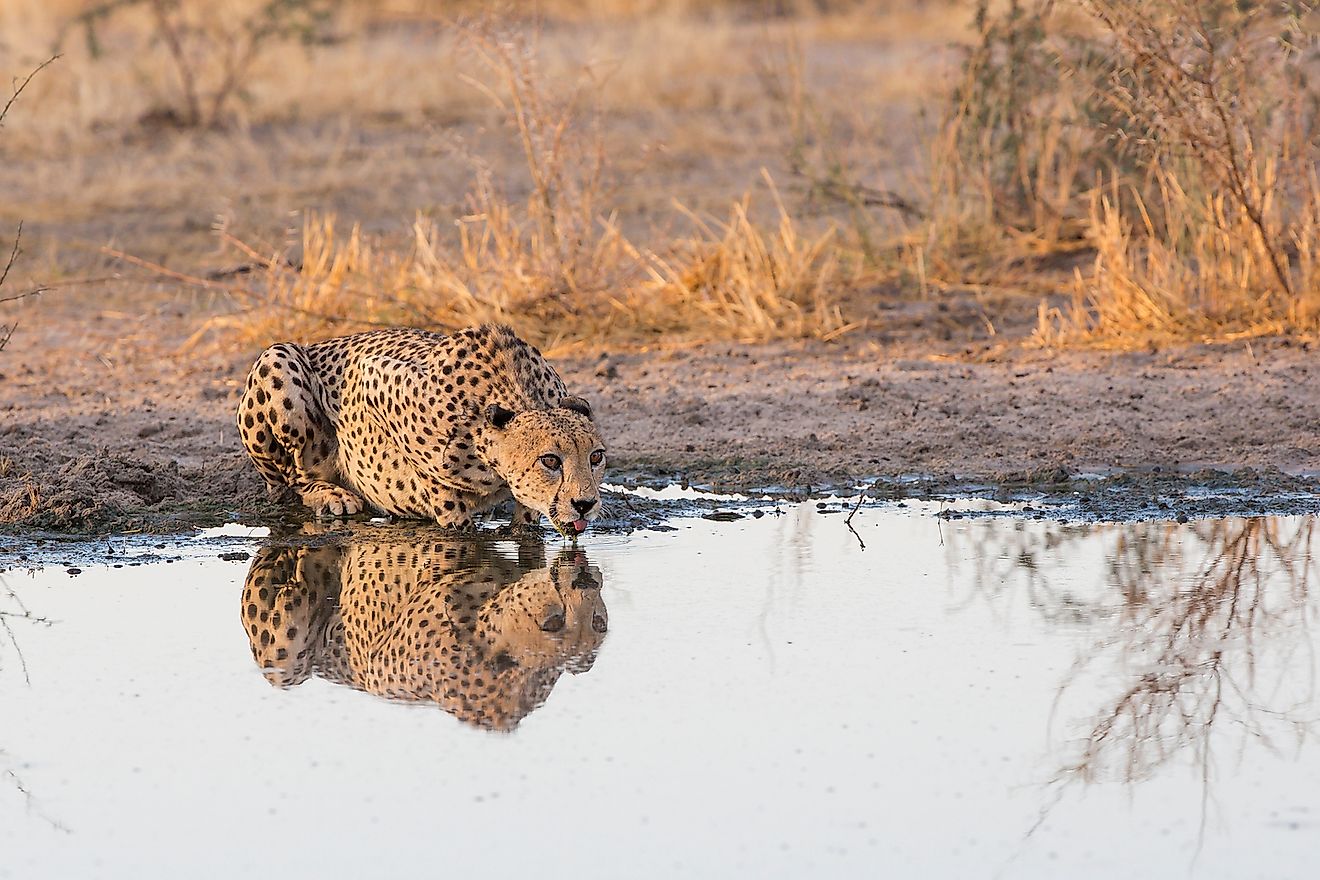
The cheetah is a large cat belonging to the Felinae subfamily. With a top speed of up to 70 mph, no land animal is faster than the cheetah. During hunting, the average speed is around 40 mph. The shoulder height of the animal can be anywhere between 28 and 35 inches and weigh between 46 and 159 pounds. The coat is usually yellowish with a uniform coverage of about 2,000 black spots. The animal is carnivorous that mostly hunts prey weighing between 51 and 123 pounds. Animals hunted include impala, springbok, duiker, and Thomson’s gazelles.
5. Aardvarks
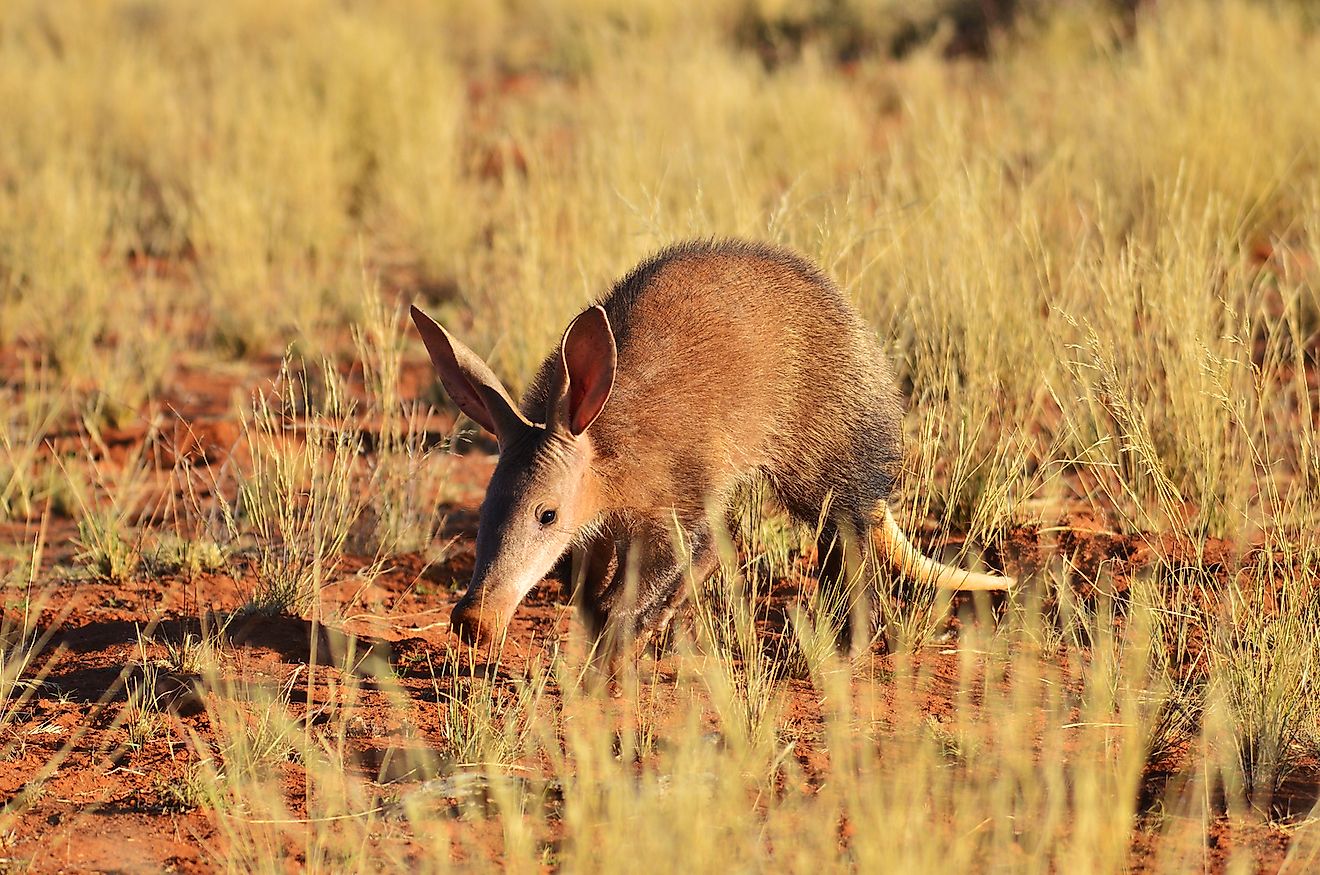
The aardvark (Orycteropus afer) is an insectivorous mammal found in the Kalahari Desert. It is a burrowing, nocturnal species with a long pig-like snout that is used to detect food. Ants and termites constitute the majority of its diet.
4. Leopard
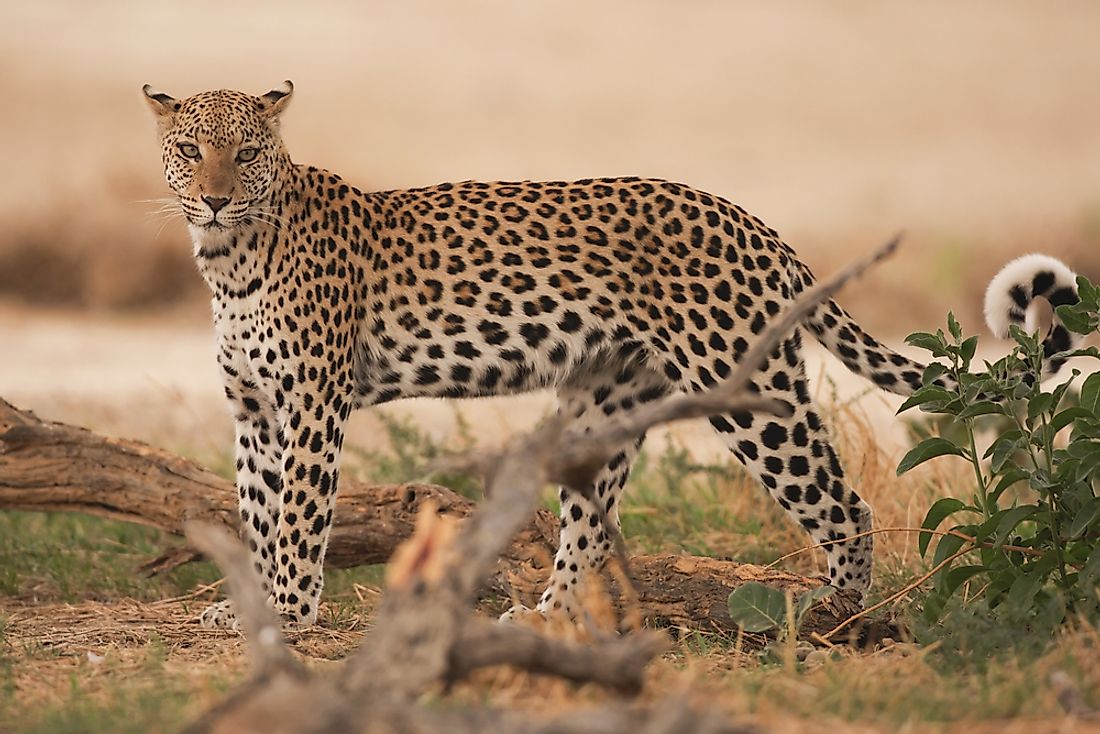
The African leopard has an average weight of between 130 and 201 pounds for the males while the females average between 77 and 88 pounds. Leopards are carnivores that mostly hunt between sunset and sunrise. In some places, they are more active at night where they hunt animals such as reedbuck, Thomson’s gazelles, zebras, and dik-dik. The color of the coat varies depending on the habitat and the location. However, in most cases, the coat color ranges from a pale yellow hue to a deep gold one. Just like the cheetah above, the body is also spotted although some parts of the leopard such as the belly and lower limbs are solid black.
3. African Wild Dog
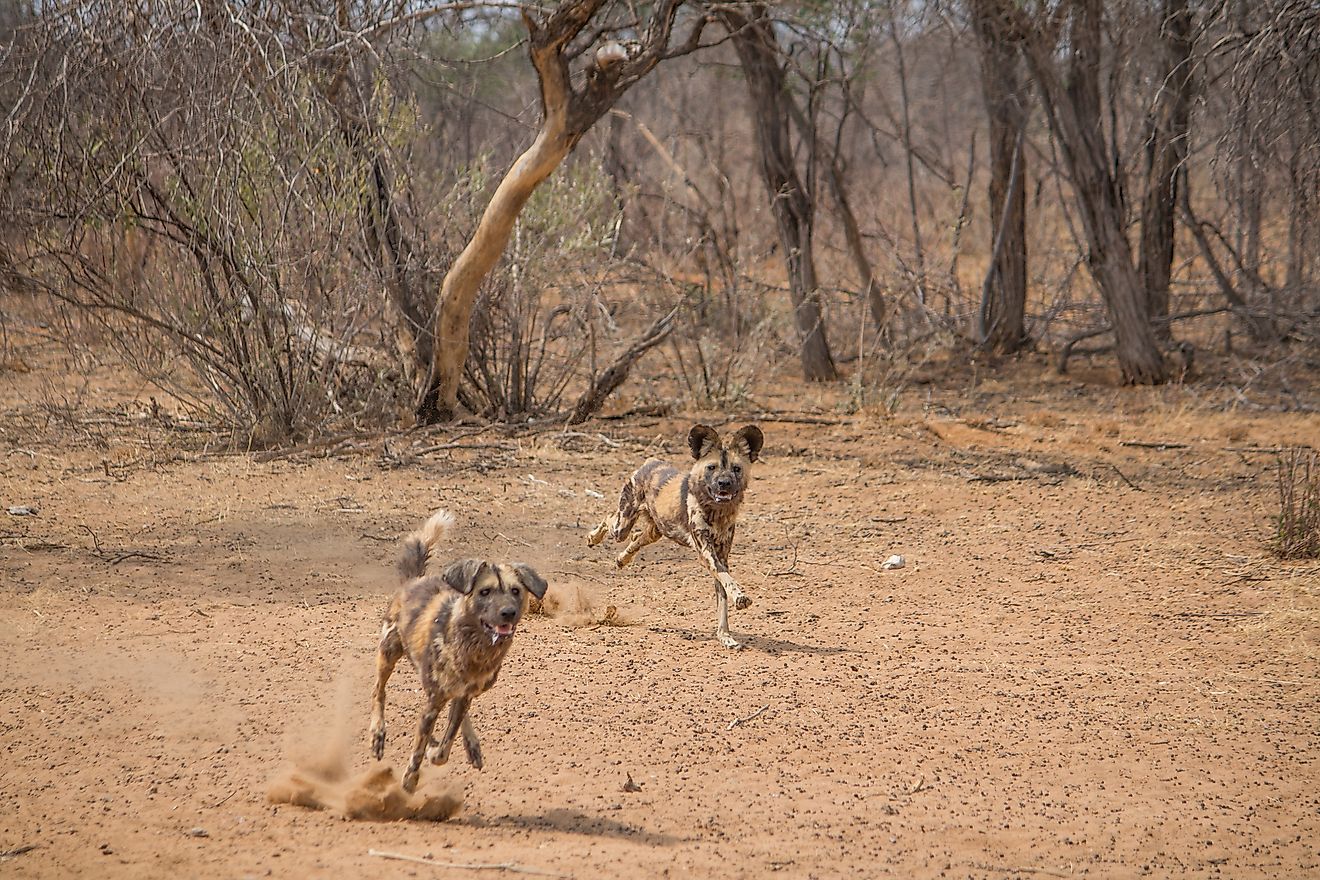
Also known as the African hunting dog, the African painted dog, the painted wolf, or the painted hunting dog, the African wild dog belongs to the genus Lycaon. The species is currently endangered since the numbers have been declining steadily due to things like human persecution, diseases, and habitat destruction. The highly social and carnivorous animal weighs between 44 and 55 pounds and has a shoulder height of between 24 and 30 inches. In southern Africa, the wild dog species can weigh as much as 66 pounds.
2. Wildebeest
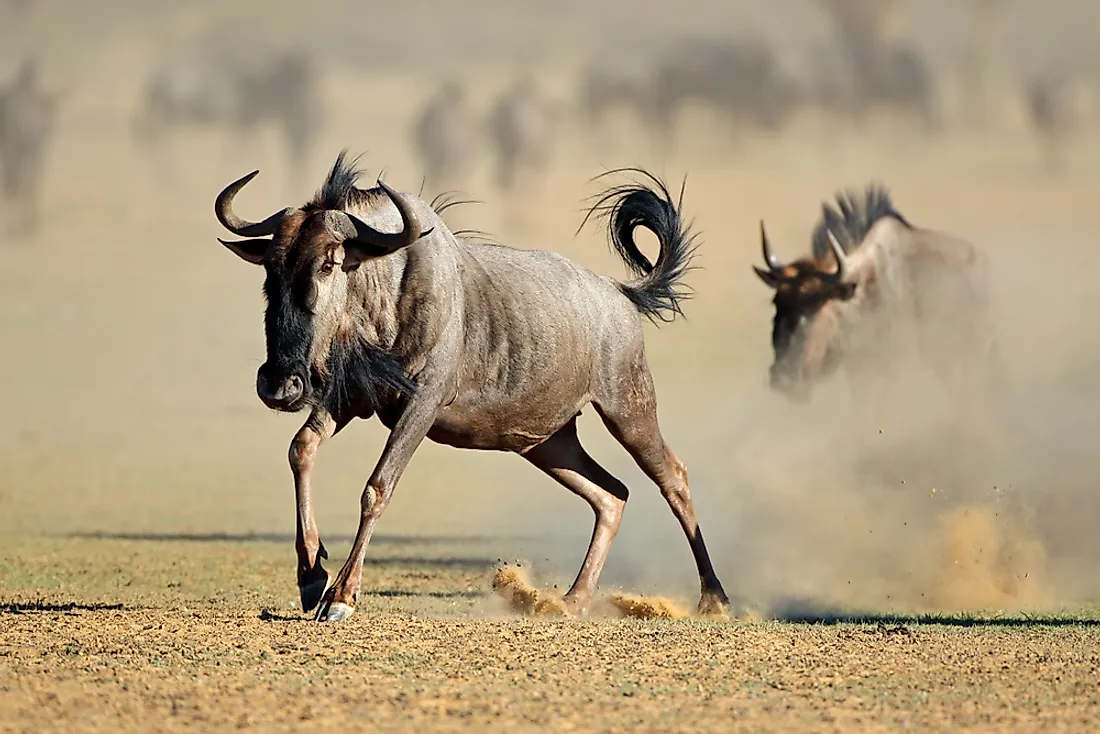
Also known as gnus, wildebeests are actually antelopes belonging to the genus called Connochaetes. Currently, two species of the animal are alive, namely the black and blue wildebeest. Of the two, the black one is endemic to southern Africa where males can weigh up to 346 pounds while females get up to 269 pounds. The tail, which also serves to distinguish the two species, is usually white and has a length of between 31 and 39 inches.
1. Lion
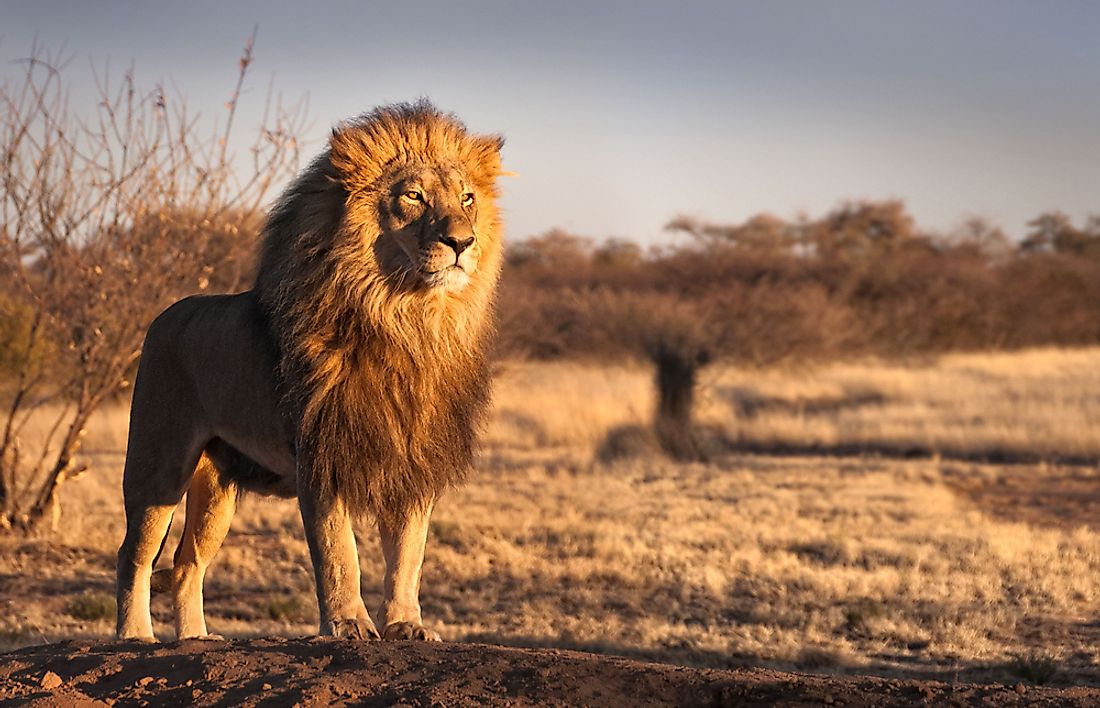
The Kalahari Desert is also famous for the Panthera leo melanochaita, a lion subspecies found in East and Southern Africa. Extremely threatened by poaching, prey depeltion, and loss of habitat, these lions populations are today intensely managed in protected areas of the Kalahari and elsewhere.











